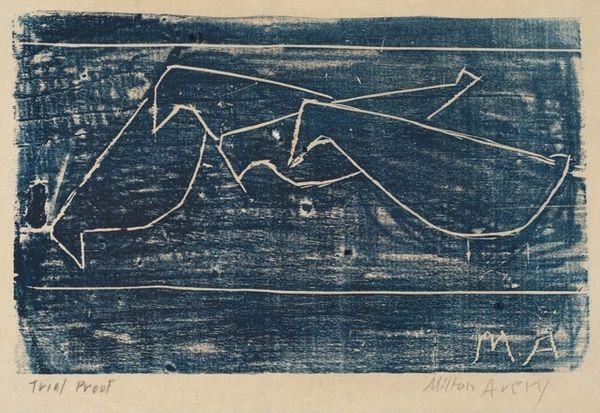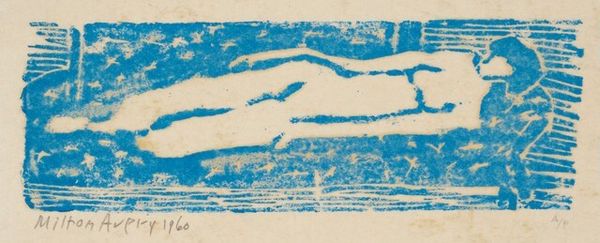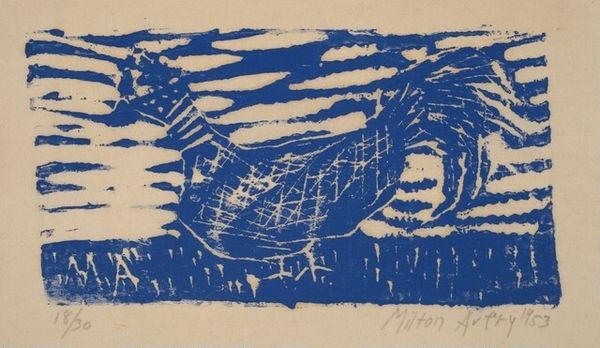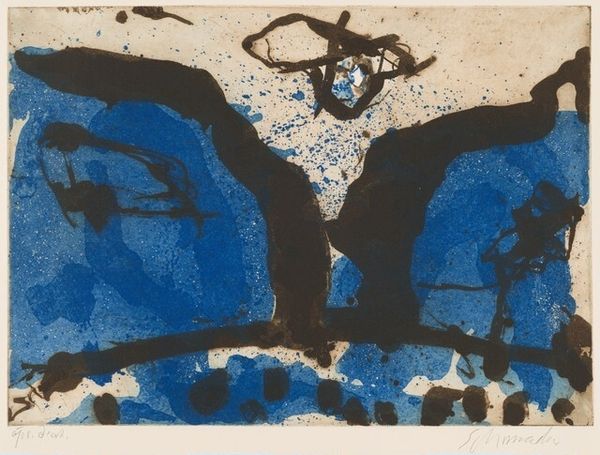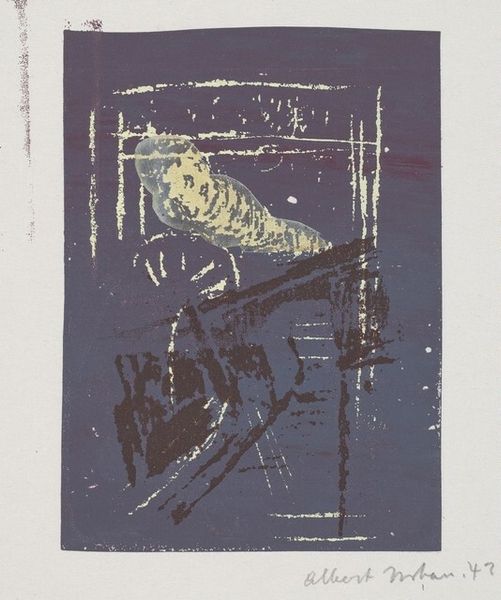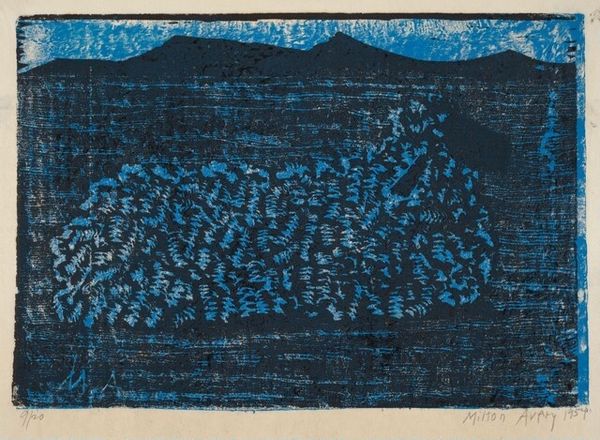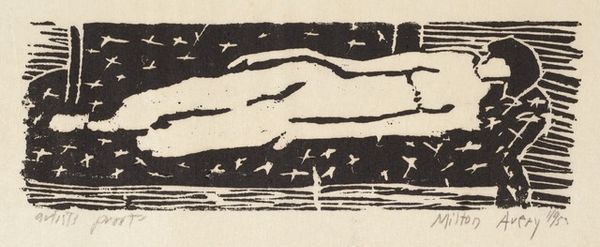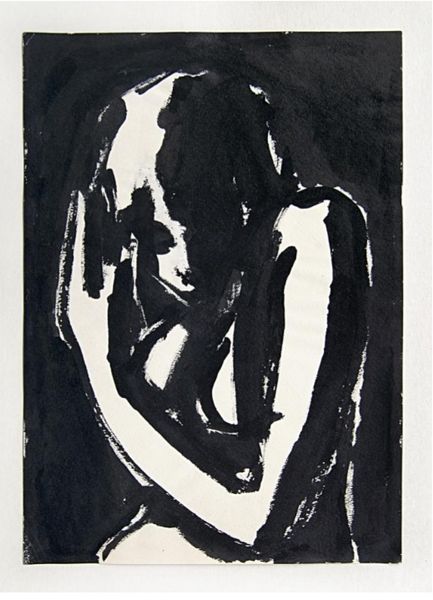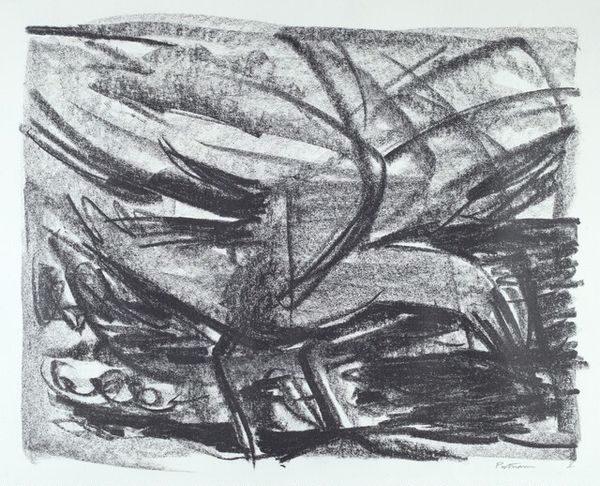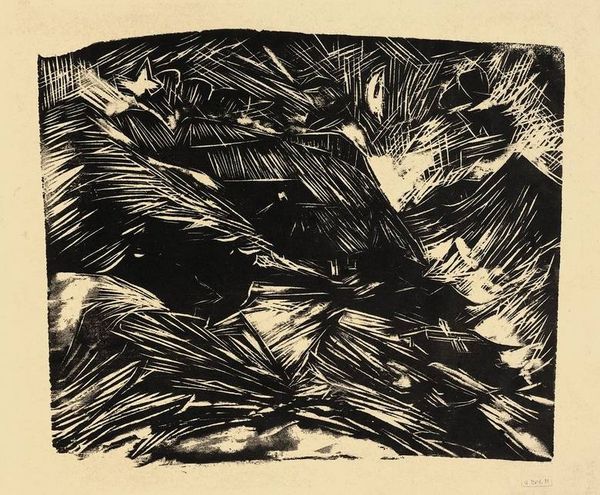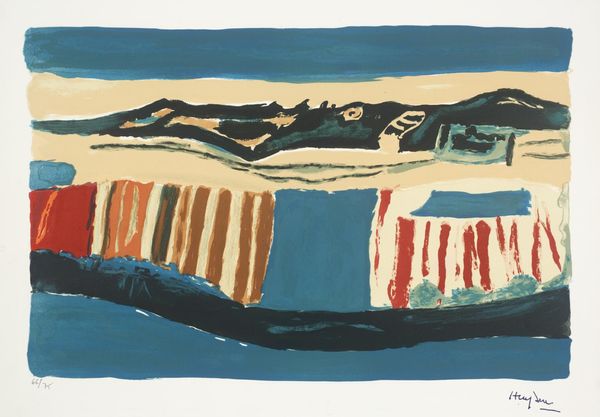
Dimensions: image: 9.8 x 27.7 cm (3 7/8 x 10 7/8 in.) sheet: 21.6 x 40.9 cm (8 1/2 x 16 1/8 in.)
Copyright: National Gallery of Art: CC0 1.0
Curator: Before us, we have Milton Avery's "Nude" from 1953, a striking woodcut print. Avery, of course, occupies a unique space in the American art landscape, bridging impressionism and modernism. Editor: Wow. Immediately, it’s the simplicity that grabs me. That electric blue against the solid black... it's like looking at a summer night, seeing someone swimming in a dream. Does that make sense? There's something profoundly serene about this, and a bit sad. Curator: I think that contrast is essential to understanding Avery. His use of seemingly simplistic forms allows for an emotional directness. The flat planes and reduction of detail certainly reflect a post-impressionistic leaning, pushing against traditional representations. It suggests a certain austerity brought on by social and economic considerations prevalent during its time. Editor: Austerity? I see playfulness. It feels less like a "nude" and more like a celebration of form, almost abstracting the human body into a landscape itself. Those choppy woodcut lines give the figure an almost aqueous feel, as though she’s both there and dissolving at the same time. It also makes me think of a jazz tune—simple, but sophisticated in its rhythm. Is that just me? Curator: Well, artistic movements rarely exist in a vacuum. While formal celebrations are important, the historical context is essential to this image. After the war and in the grips of McCarthyism, nudes became loaded cultural symbols reflecting attitudes toward the human body within that environment. To explore such topics openly would be inherently political. Editor: Absolutely, I can totally dig that reading. Knowing it's from 1953 changes the conversation, doesn't it? I suppose I'm looking at it through a different lens - wanting to embrace an almost innocent sensuality amid everything—trying to escape the weight, if you will, which perhaps inadvertently, speaks to Avery's cultural resistance. Curator: Precisely, and by simplifying the form, it allows a level of introspection and abstraction that creates universality. Avery’s decision to exhibit work such as "Nude," allowed it to exist in a society grappling with identity. Editor: Right, right. Thanks for laying all of that out! I'm walking away seeing something different than when I started. That quiet sense of serenity still remains for me but also seeing this image in the social framework... very cool! Curator: Yes, seeing an artwork beyond aesthetics brings new perspective and layers of conversation to what we initially believe we perceive. It really underscores the political function that artistic vision played at this moment in history.
Comments
No comments
Be the first to comment and join the conversation on the ultimate creative platform.
